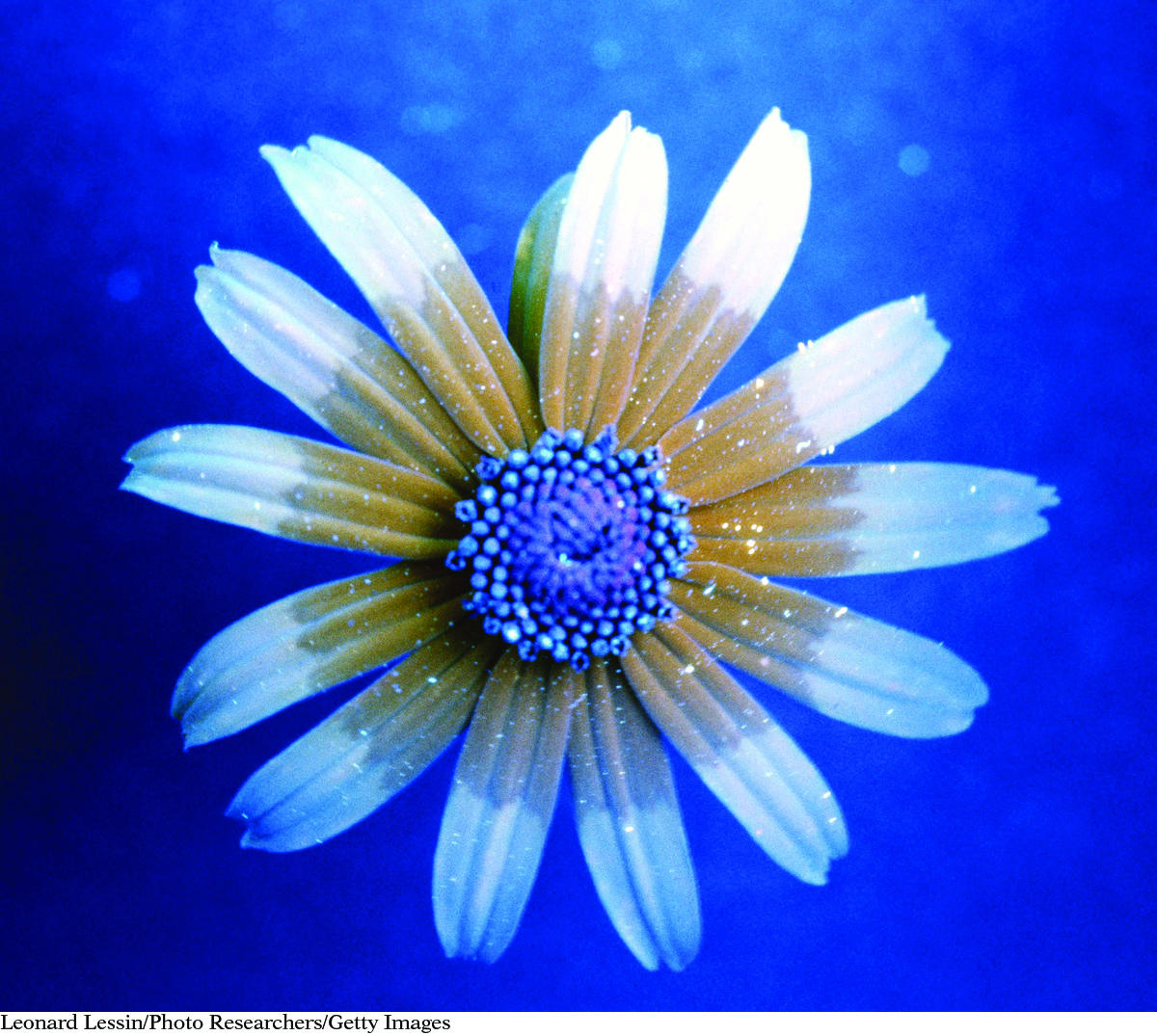Chapter 22 Introduction

Bees and humans do not see the patterns on flowers in the same way. The photograph of this flower has been altered to show the way a bee sees light. The tan areas help to lead the bee to the nectar at the flower’s center.
Leonard Lessin/Photo Researchers/Getty Images
CHAPTER 22
Radiating Energy
575
In this chapter, you will study
the emission, reflection, transmission, and absorption of light
how color arises
the path of light as a ray, as a wave, and as a particle
how to detect electromagnetic radiation
Fire produces bright light and transfers energy. When hot gases produced in a fire come into direct contact with objects at lower temperatures, some energy is transferred. In addition, fire and extremely hot objects transfer energy as electromagnetic radiation. Fire transfers energy efficiently as infrared radiation that makes you feel warm. Chapter 22 of Unit 5: Fire focuses on models to describe light energy and its interaction with matter.